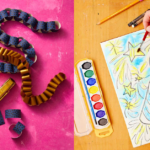
THIMPU: Bhutanese traditional arts and crafts are more than just artistic expressions; they embody the country’s identity, values, and spiritual principles. However, despite their authenticity, these crafts face a growing threat from commercialisation, which risks eroding traditional craftsmanship.
The primary concern stems from the mass import of arts and crafts from Nepal and India, worth millions of ngultrum. Cheaper, mass-produced imports pose an existential threat to Bhutanese artisans. While there is no specific data exclusively tracking the import of foreign arts and crafts, many of these items are religious artifacts such as statues, bumpa (vase), karmey kom (butter lamp container), cymbals, duung (Horn), and jaling (clarinet).
Chorten Dorji, executive director of the Handicrafts Association of Bhutan (HAB), said that handicrafts are often produced with less skill, dedication and authenticity in today’s market. Many are hastily made, modified or mass-produced to meet commercial demands, sacrificing traditional craftsmanship.
The tourism industry has exacerbated this problem, with imported crafts being falsely marketed as authentic Bhutanese products. As a result, the true narratives behind Bhutan’s arts and crafts are being lost.
Despite these challenges, efforts to preserve Bhutanese craftsmanship remain limited. Ultimately, the country risks losing its rich cultural heritage.
While HAB is not against commercialisation, Chorten Dorji stressed that it should not come at the cost of diluting Bhutan’s cultural heritage. Imported craft products, often made from inferior materials, fail to meet the rigorous standards of authenticity and craftsmanship that define Bhutanese art. Their production prioritises cost and speed over tradition.
In an attempt to compete with these low-cost imports, some Bhutanese artisans have begun modifying their techniques and designs, sacrificing authenticity for marketability.
The stark price difference between imported and locally crafted handicrafts has influenced consumer choices, pushing buyers toward cheaper, mass-produced imitations.
Bhutanese artisans struggle to compete with imported goods, as many lack the resources to produce in bulk. The cost of raw materials further increases the price of local crafts.
Some consumers prefer imported items for their visual appeal. Namgay, a shop owner specialising in traditional arts and crafts, said that while she aims to sell only local products, it is difficult to sustain her business.
To stay afloat, she also imports crafts, as local products are not selling well. A bundle of locally made luungdar (prayer flags) costs Nu 150 (US$1.75), while an imported one sells for Nu 80 (US$0.093), making it harder to convince customers to buy Bhutanese-made products.
Another shopkeeper, Phurpa Yangzom, said that Bhutanese artisans struggle to compete with Nepali craftsmen in making high-value metal statues.
Local artisans primarily produce menku, statues made from stone particles, which do not fetch high prices. Phurpa’s family, which specialises in menku, must also import raw materials, further increasing production costs.
Bhutanese artisans face diminishing institutional and financial support, making it difficult for them to sustain their craft. Many are compelled to adapt their designs to market demands rather than preserving their cultural significance.
Even young artisans who study Zorig Chusum, the 13 traditional arts and crafts, find it challenging to establish sustainable careers.
Organisations like HAB, which work to promote traditional arts and crafts, face financial constraints and struggle to provide adequate support to artisans.
HAB has taken several initiatives to support artisans, including offering guidance, facilitating skills development, and connecting them to market opportunities.
The association also educates the public on the symbolism and cultural significance of Bhutanese arts and crafts.
The Department of Media, Creative Industries, and Intellectual Property (DoMCIIP) and HAB are working on a “Collective Mark” certification system to distinguish authentic Bhutanese handicrafts from imported alternatives.
Launched in 2024, the initiative is still in the process of implementation, with efforts underway to complete mark registration and other regulatory aspects.
The government also promotes Bhutanese arts and crafts in local and international markets to raise awareness and foster appreciation.
HAB and the Department of Culture and Dzongkha Development (DCDD) are collaborating to document and safeguard the meaning, storytelling, and traditional techniques embedded in Bhutanese arts and crafts.
This ensures that craftsmanship remains true to its heritage rather than being diluted by market demands.
Utsha Gurung, chief of the Antique Division at DCDD, said that while many Jinzop (sculptors) are emerging, some of their designs lack iconographic accuracy.
DCDD’s Jinzop team is providing guidance to artisans to maintain authenticity.
To help artisans reach a wider audience, HAB has also established an e-commerce platform on its website, allowing member artisans to sell their products online.
However, ensuring the long-term survival of Bhutan’s traditional arts and crafts requires collective action. Artisans believe that policies should regulate the sale of imported crafts, ensuring that they are not falsely marketed as Bhutanese products.
Strengthening branding, certification, and consumer awareness is crucial. Additionally, import restrictions or taxation policies on foreign handicrafts that imitate Bhutanese designs could help level the playing field for local artisans.
Artisans also require financial and institutional support, as well as patronage programs, to continue practicing their craft authentically.
Many believe that social media can play a critical role in promoting Bhutanese arts and crafts.
Artisans must be equipped with digital skills to effectively market their products. Those in the tourism sector must also be actively engaged in preserving and promoting Bhutan’s authentic arts and crafts. This includes recognising and incentivising their role while providing in-depth training on the significance, stories, and techniques of Bhutanese handicrafts. – Kuensel/ANN











